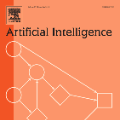We introduce AAM-Gym, a research and development testbed for Advanced Air Mobility (AAM). AAM has the potential to revolutionize travel by reducing ground traffic and emissions by leveraging new types of aircraft such as electric vertical take-off and landing (eVTOL) aircraft and new advanced artificial intelligence (AI) algorithms. Validation of AI algorithms require representative AAM scenarios, as well as a fast time simulation testbed to evaluate their performance. Until now, there has been no such testbed available for AAM to enable a common research platform for individuals in government, industry, or academia. MIT Lincoln Laboratory has developed AAM-Gym to address this gap by providing an ecosystem to develop, train, and validate new and established AI algorithms across a wide variety of AAM use-cases. In this paper, we use AAM-Gym to study the performance of two reinforcement learning algorithms on an AAM use-case, separation assurance in AAM corridors. The performance of the two algorithms is demonstrated based on a series of metrics provided by AAM-Gym, showing the testbed's utility to AAM research.
翻译:我们引入了AAM-Gym(AAM-Gym),这是高级空中流动的研发试验台。AAM有可能通过利用电垂直起飞和着陆(eVTOL)飞机和新的高级人工智能算法等新型飞机,例如电垂直起飞和着陆(eVTOL)飞机和新的高级人工智能算法,使旅行发生革命性的变化,使旅行发生革命性革命性革命性革命性革命性革命性革命性革命性革命性革命性革命性革命性革命性革命性革命性革命性革命性革命性革命性革命性革命性革命性运动(AAM-Gym ) 。 在本文中,我们使用AAM-Gym 来研究AAM 使用案例的两种强化学习算法的性能,以及AAM 走廊的分离保证。两种算法的性能是根据AAM-Gym提供的一系列指标来证明,显示测试台对AAM研究的效用。



